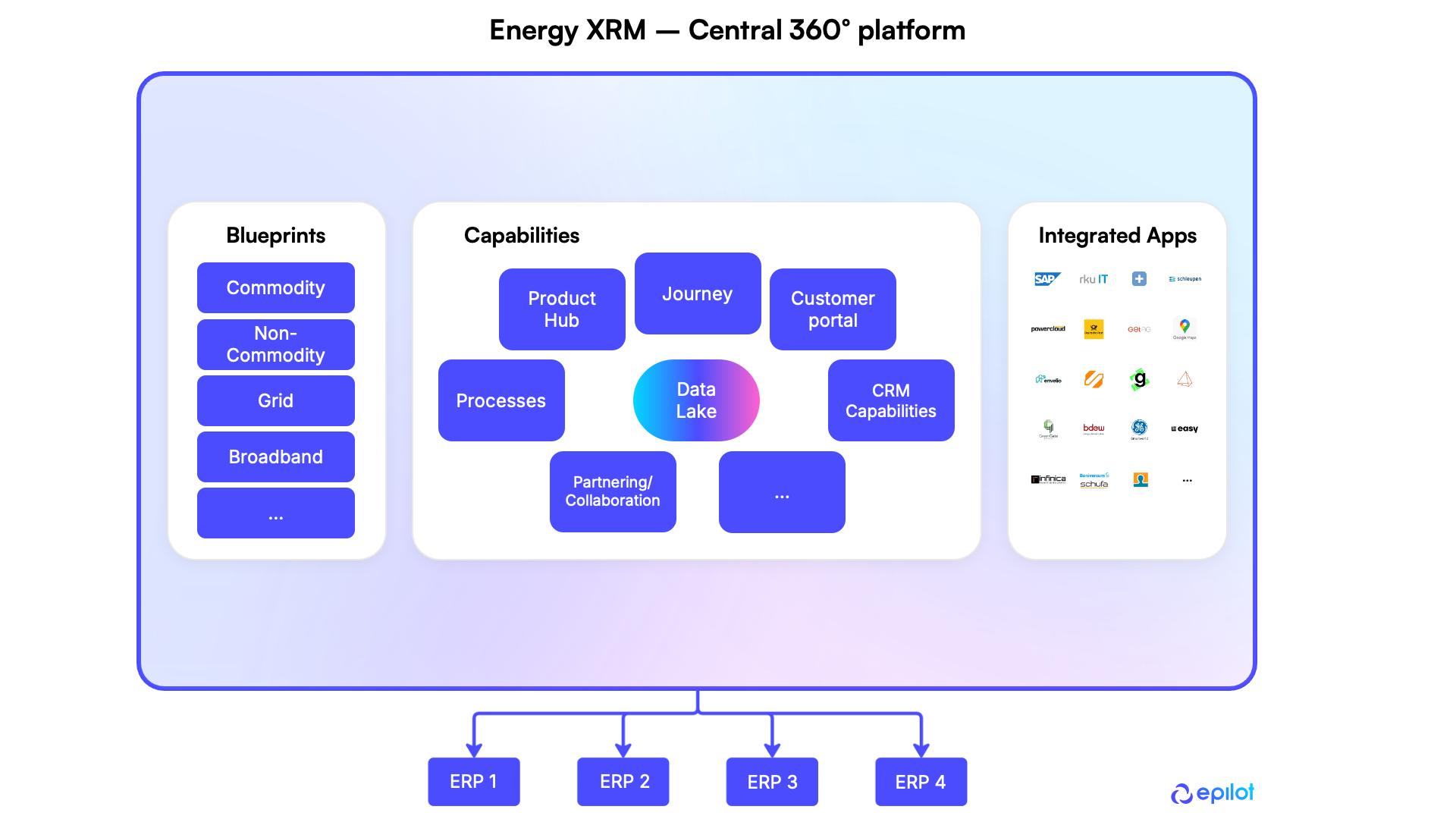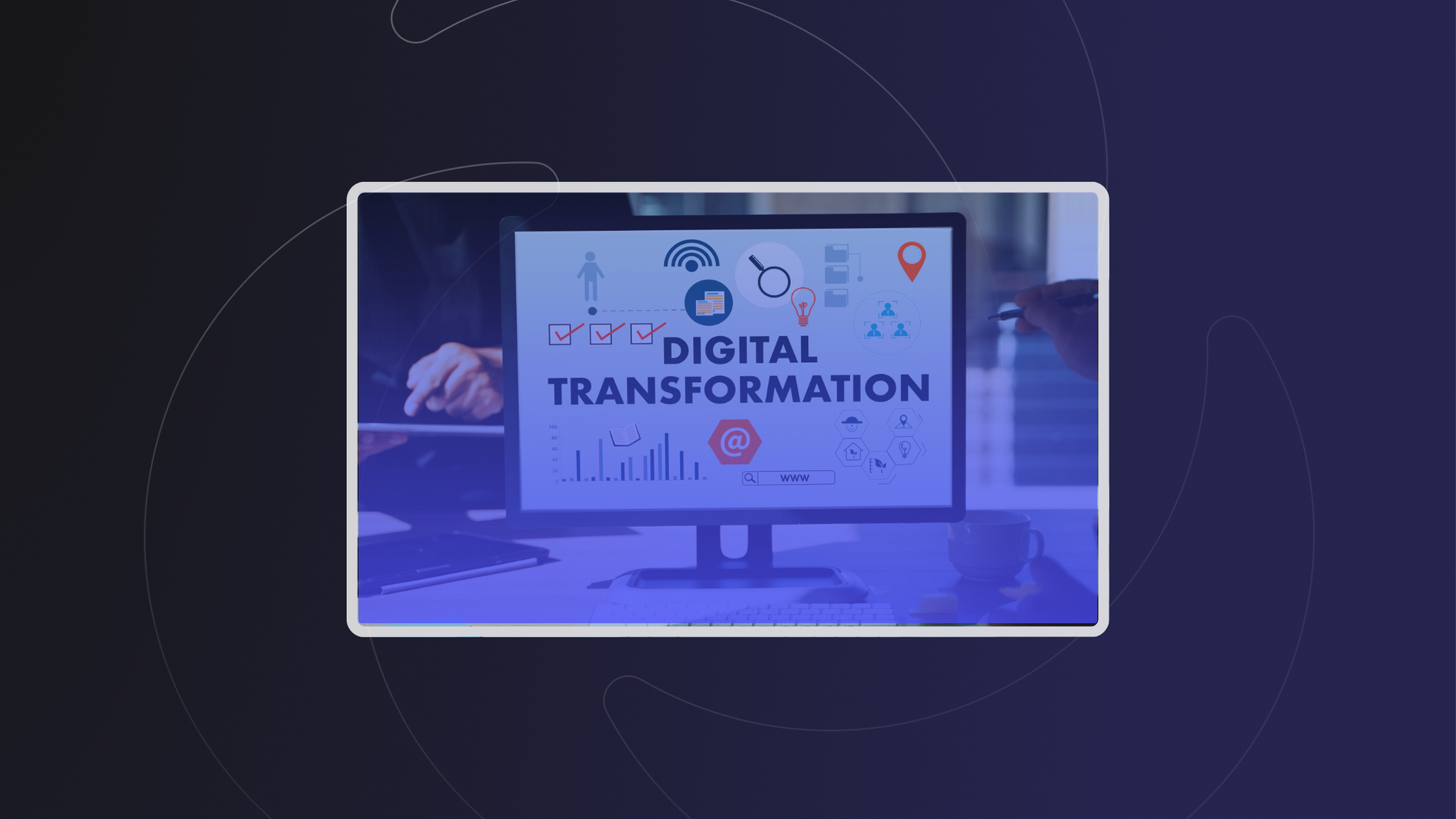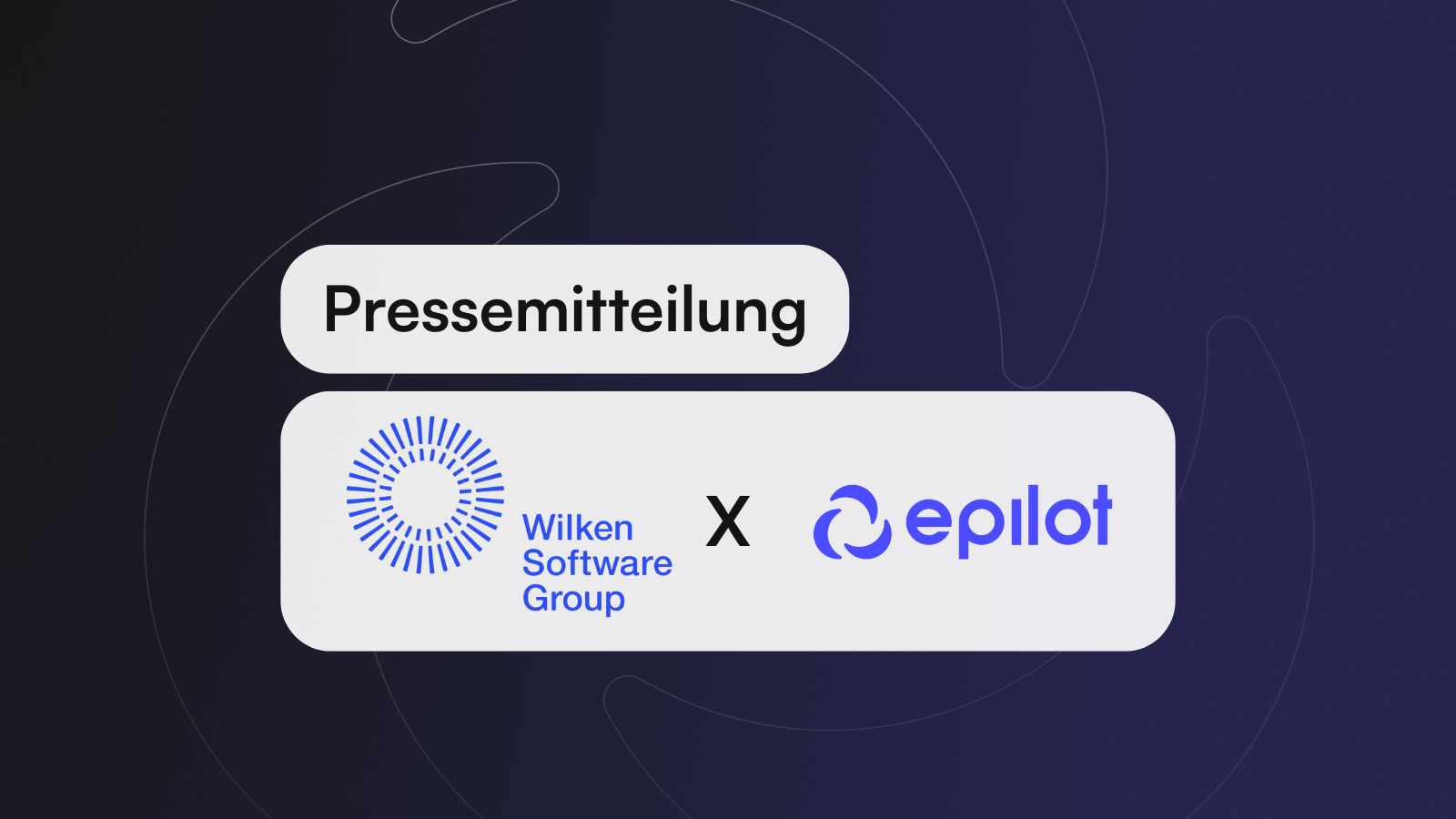In today’s fast-changing energy market, utilities face growing challenges like shifting customer needs, rising service demands, and new competition. Classic CRMs, built generically for all industries, fall short in addressing the unique complexities of the energy sector. Instead of a generic CRM, energy suppliers and grid operators need an energy-focused xRM tailored to their specific needs - a 360° platform to manage any relationships.
The Shortcomings of Classic CRMs
At their core, CRMs are generic tools. They are built to cater to a wide array of industries—from insurance to banking to retail—and as such, they require extensive customization to fit the specific needs of any given sector.For utilities and grid operators, this presents significant challenges:
Lack of Market Specialization:
CRMs are not tailored to the energy market. They offer a “naked” framework that requires substantial customization to handle the utility business, such as complex tariff structures, integration with energy-specific systems like ERPs, and management of both commodity and non-commodity products and prices.
High Costs and Slow Time to Market:
Customizing a CRM is time-consuming and expensive. CRM projects often take years to complete, require external consultants and implementation partners, and frequently exceed their budgets and timelines.
Lack of Expertise:
External implementation partners often lack deep market expertise. These partners work across various industries, which means they may not have a long-lasting focus on the energy market. This can result in slow project initiation, as partners first need to familiarize themselves with the basics.
Different Interests:
External partners are typically compensated on a project basis, which means they have a vested interest in prolonging projects. This differs from product companies with a license model, where the focus is on customer success. This misalignment can lead to conflicts of interest, where implementation partners may resist strong standards that can be quickly rolled out across the market.
Costly Maintenance:
Customized solutions are unique and require continuous maintenance and adjustment. As market conditions change, new implementation projects are needed, leading to an ongoing cycle of time-consuming and expensive updates.
Feature Gaps:
While CRMs offer a broad range of capabilities, they often lack the core features utilities need, such as product management, pricing, customer journeys, self-service, and external partner collaboration. As a result, utilities often need to invest in additional agencies to build out sales and lead generation journeys, integrate external pricing engines, develop customer portals, and repurpose CRMs to collaborate with external partners.
Lack of AI and Data Verticalization:
Generic AI models work well for general tasks but perform poorly on specialized tasks they haven’t been trained on. Classic CRMs, which lack verticalization, are less effective at leveraging AI for energy-specific needs. This lack of market-specific intelligence hampers decision-making and reduces the effectiveness of automated processes.
Old Architecture and Tech Debt:
Many CRMs are built on outdated technology stacks. These legacy systems come with significant technical debt, slowing down development cycles and making it difficult to respond quickly to changing market dynamics. Modern technology platforms, in contrast, can deliver functionality with fewer resources and at a faster pace.
Global Players, Local Needs:
Most CRM solutions are developed by global companies with little focus on regional or industry-specific needs. A US-listed CRM, for example, may not prioritize the specific requirements of a local German utility. This disconnect often leads to poor alignment between the CRM provider and the utility, resulting in suboptimal customer relationships.

XRM: Redefining Relationship Management for Energy suppliers and grid operators
An XRM (Any Relationship Management) goes beyond the classic CRM by managing not only customer relationships but the entire network of interactions and collaborations a business has — with partners, installers, suppliers and internal teams. While a CRM focuses primarily on customer interactions, an xRM extends this functionality to handle any-to-any relationships, enabling organizations to manage the full complexity of their business environment. This broader scope allows for greater flexibility, enhanced collaboration across organizations, and better alignment with the specific needs of industries like the energy sector.
epilot - The energy XRM: A Platform Tailored to Energy suppliers and grid operators
While utilities absolutely need customer relationship management capabilities, a classic CRM is the wrong solution. Utilities need a flexible platform that enables collaboration across different companies and is tailored to the specific needs of the energy market. They need a vertically integrated platform that provides a cohesive experience—an energy XRM.
Key Characteristics of an energy XRM:
Market-Specific:
An energy XRM is built with a deep focus on the energy market, where the platform’s creators are experts in the industry themselves.
Fast Time to Market with Industry-Specific Blueprints:
Instead of starting with a blank tool, an energy XRM provides pre-configured blueprints that package entire end-to-end business use cases into ready-to-use configurations, drastically reducing time to market and costs.
Core Capabilities Integrated into One Platform:
Key capabilities — such as product management, pricing, customer touchpoints, and partner collaboration — are natively built into the core of an energy XRM, providing the necessary specialization for the energy market right out of the box.
Full Flexibility & Extendability:
Every enterprise has unique needs, so there is no one-size-fits-all solution. Hard-coding processes and capabilities limits flexibility. Industry-specific blueprints offer an 80-90% ready-to-use starting point. In addition, an energy XRM enables the remaining 10-20% to be adapted completely without the need for programming knowledge in the specialist departments themselves, in order to ensure fast and flexible customization.
Market Insights:
Thanks to the large number of customers who carry out millions of business processes with epilot, the energy XRM has a unique pool of energy-specific data. This data enables a deep understanding of the energy market and provides helpful benchmarks for epilot customers. What is the best concept for selling a particular product? How can the current customer experience be improved?
Vertical AI:
Data is key to improving AI. An energy XRM leverages energy market-specific data to fine-tune AI models, leading to Vertical AI that outperforms generic AI in core tasks, delivering massive efficiency gains.
Customer Community:
All customers face the same market challenges, and through the community, they can learn from each other on how to tackle new market demands and improve their operations. These collective insights can get integrated back into the energy xRM and shared with the entire customer base for everyone to benefit.

Conclusion
The energy market is too complex, too specialized, and too dynamic for a one-size-fits-all solution like a classic CRM. Utilities need a platform built with their specific needs in mind—a platform that goes beyond mere customer relationship management to encompass every aspect of their operations. It’s time for utilities to move beyond the limitations of CRMs and embrace a solution that is truly designed for their future—an energy XRM.





.png)
